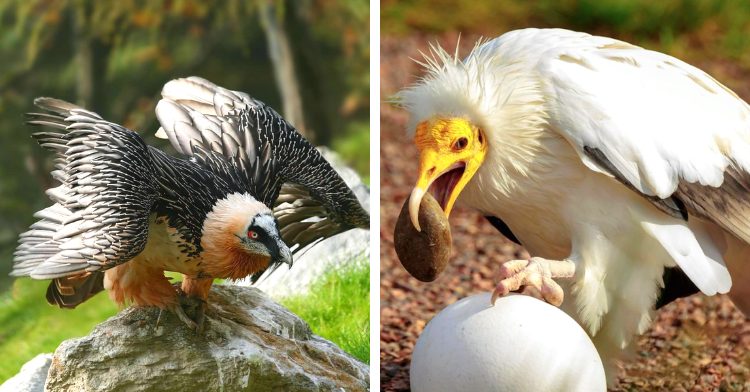Vultures are incredibly misunderstood and misrepresented birds. These creatures are some of the most fascinating and important animals in the animal kingdom. While most people don’t think much about them outside of viewing them as gross scavengers, vultures play a crucial role in the ecosystem.
Videos by InspireMore
Vultures are nature’s janitors, feasting on carrion that would otherwise be left to rot and spread disease. They have incredibly corrosive stomach acid that digests and destroys bacteria and viruses, keeping them from spreading. Vultures are essential in keeping our environment clean and healthy.
These incredibly important animals come in an immense variety of shapes and sizes! Here are three unique species of vultures that you’ve probably never seen before:
1. The Impressive Andean Condor
One of the most iconic and majestic vultures is the Andean condor. This magnificent bird has a massive wingspan of up to ten feet. They live high in the mountains of South America, particularly in the Andes, where they get their name. The Andean condor is one of the longest-living birds in the world, with some individuals reaching an astonishing 70 years old.
2. The Colorful Egyptian Vulture
The Egyptian vulture sports strikingly vibrant coloration. They have white plumage, or feathers, and a striking yellow face. While most vultures feed exclusively on carrion, the Egyptian vulture also eats small animals and eggs. This species has been observed using tools, such as rocks, to crack open the eggs of other bird species.
3. The Bone-Crunching Lammergeier
Last but certainly not least, we have the bearded vulture, also known as the lammergeier. The bearded vulture gets their name from the tufts of feathers around their face, giving them a distinctive “bearded” look.
While they scavenge like their counterparts, the bearded vulture also has a taste for bones. They will drop large bones from great heights to break them into smaller, more manageable pieces and swallow them whole!
Vultures, with their unique adaptations and ecological significance, deserve our admiration and respect. By learning more about these remarkable creatures, we can work towards conserving their habitats and protecting their populations!
You can find the source of this story’s featured image here and here.
Want to be happier in just 5 minutes a day? Sign up for Morning Smile and join over 455,000+ people who start each day with good news.


